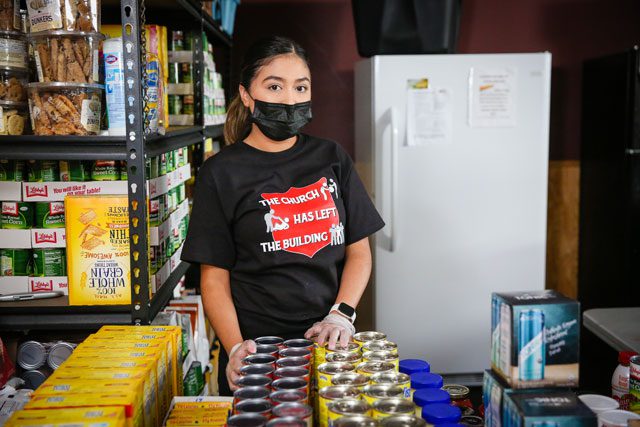The Salvation Army Kroc Center in Biloxi, Miss., gives homeschooled students weekly access to extracurricular activities in a group setting.
By Lizeth Beltran –
 Amid growing concerns over public and private school instruction, homeschooling has quietly become the fastest growing form of education in the U.S. Through a weekly program in Biloxi, Miss., The Salvation Army works to make sure home-educated students get the most out of their experience.
Amid growing concerns over public and private school instruction, homeschooling has quietly become the fastest growing form of education in the U.S. Through a weekly program in Biloxi, Miss., The Salvation Army works to make sure home-educated students get the most out of their experience.
“From a parent’s aspect, our program is simple,” said Aaron Windham, Music and Creative Arts Coordinator at the Ray and Joan Kroc Corps Community Center in Biloxi. “Students can come one day [a week] and get five different classes in a state-of-the-art facility.”
The program is funded by class fees—$15 for five classes for non-members and $12 for five classes for members. Through the fees, the center provides classes from certified instructors in art, music, swim, physical education and Spanish language.
“If you’re homeschooled, you’re pretty free to do what you want,” Windham said. “We don’t fall under any specific regulations with our program.”
The program began four years ago with just five students but now serves over 100 students ages 4 and up per semester. The surge in enrollment mirrors a national trend. According to the National Center for Education Statistics, the number of homeschooled students across the U.S. has climbed to a record high of nearly 1.8 million.
 “Many parents do it [homeschool] for religious reasons,” Windham said. “They don’t want their kids exposed to certain things, like creation in science.”
“Many parents do it [homeschool] for religious reasons,” Windham said. “They don’t want their kids exposed to certain things, like creation in science.”
Others parents might turn to homeschool because they serve in the military and move often, or to avoid Common Core Standards and instead tailor the curriculum and learning environment to each child.
According to Windham, one of the keys to the program’s recent success is input from parents. At the end of each semester, Windham issues a survey for parents to voice their concerns and make suggestions to improve the program. Windham has even used the survey responses to help inform which courses would be most useful to the students.
Danielle Wagner, an art instructor for the program, said she has seen tremendous growth in her students over the past year. “They’re able to meet kids their age and do art and music—things that are vital for all children when they’re growing up,” she said.
Added Windham: “It’s not only a fun thing to do, but also an educational thing. They’re learning to play together. [They haven’t] quite learned how to talk to each other as far as what is appropriate and what is not appropriate. Class settings and rules allows kids to develop their socialization skills.”
The Salvation Army hopes to expand the program to meet the growing demand while keeping it affordable. Windham cited that one of the biggest challenges is changing the course settings for students who have been at the Kroc Center for several semesters and skill levels in courses have outgrown the current curriculum.
Yet, according to Wagner, instructors play a vital role in much of the students’ growth—a role she and others don’t take lightly.
“We try to build their confidence and self-esteem so they can become functional adults,” she said. “I try to bring a little bit of everything.”












